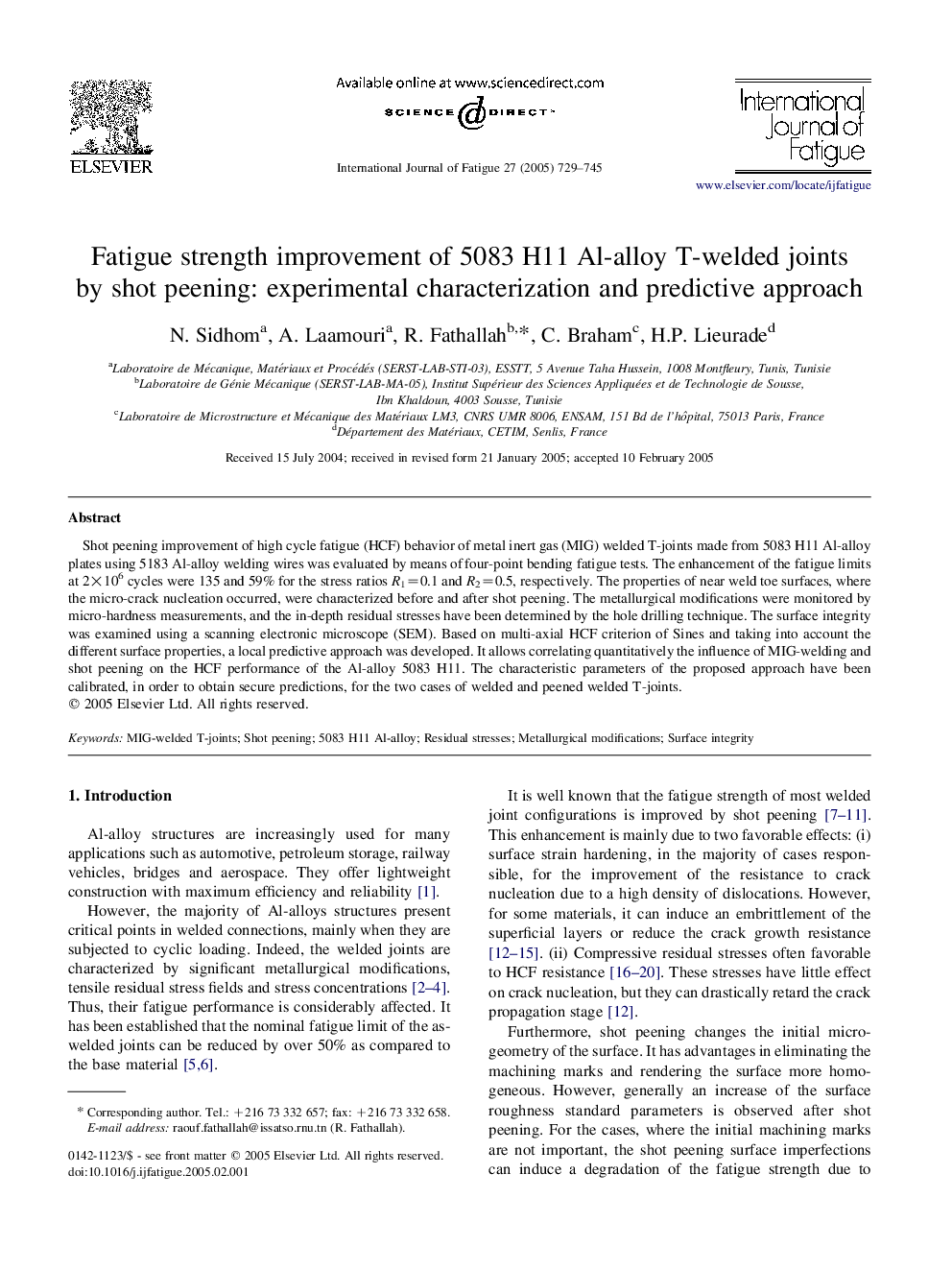| Article ID | Journal | Published Year | Pages | File Type |
|---|---|---|---|---|
| 9703944 | International Journal of Fatigue | 2005 | 17 Pages |
Abstract
Shot peening improvement of high cycle fatigue (HCF) behavior of metal inert gas (MIG) welded T-joints made from 5083 H11 Al-alloy plates using 5183 Al-alloy welding wires was evaluated by means of four-point bending fatigue tests. The enhancement of the fatigue limits at 2Ã106 cycles were 135 and 59% for the stress ratios R1=0.1 and R2=0.5, respectively. The properties of near weld toe surfaces, where the micro-crack nucleation occurred, were characterized before and after shot peening. The metallurgical modifications were monitored by micro-hardness measurements, and the in-depth residual stresses have been determined by the hole drilling technique. The surface integrity was examined using a scanning electronic microscope (SEM). Based on multi-axial HCF criterion of Sines and taking into account the different surface properties, a local predictive approach was developed. It allows correlating quantitatively the influence of MIG-welding and shot peening on the HCF performance of the Al-alloy 5083 H11. The characteristic parameters of the proposed approach have been calibrated, in order to obtain secure predictions, for the two cases of welded and peened welded T-joints.
Related Topics
Physical Sciences and Engineering
Engineering
Mechanical Engineering
Authors
N. Sidhom, A. Laamouri, R. Fathallah, C. Braham, H.P. Lieurade,
